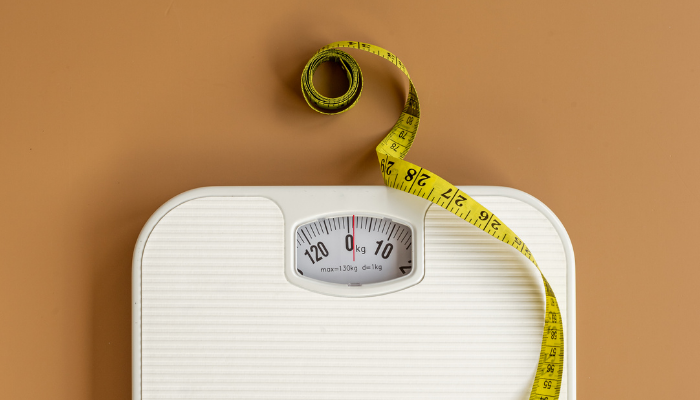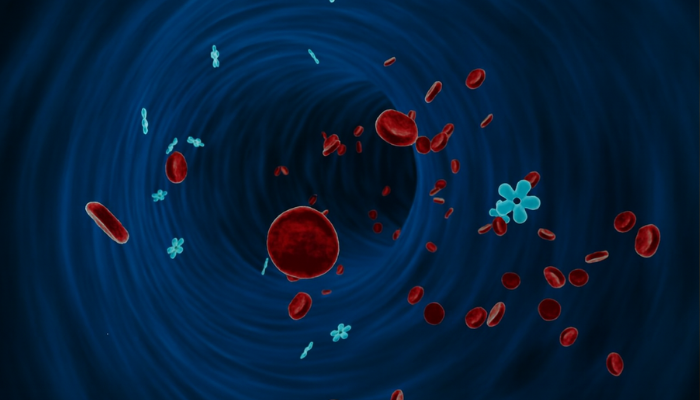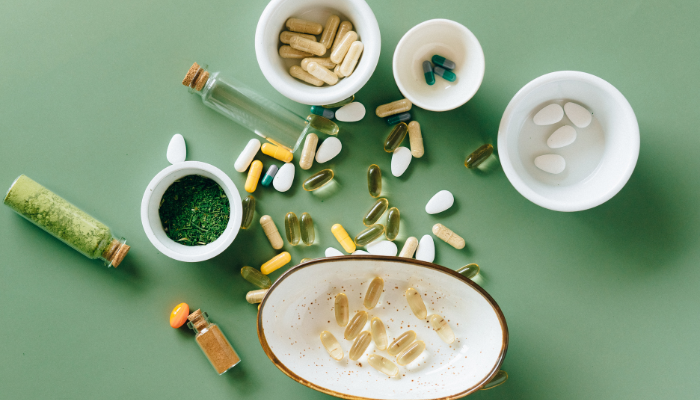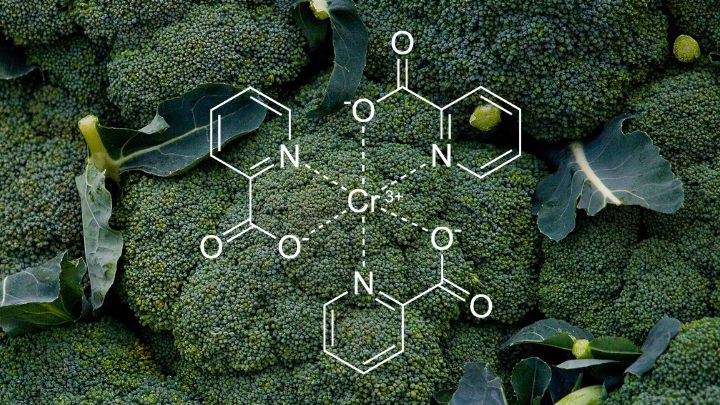An ancient Hindu fable tells the story of six esteemed blind men who encounter an elephant. Each approaches it, touches a different part, and forms his own conclusion.
- The first man, feeling the elephant’s broad, sturdy side, confidently proclaims, “The elephant is like a wall!”
- The second touches its tusk and declares, “It is more like a spear!”
- The third, holding the elephant’s writhing trunk, asserts, “The elephant is definitely like a snake!”
- The fourth, grasping its leg, declares, “It’s obvious the elephant is like a tree!”
- The fifth, brushing against the elephant’s ear, insists, “Anyone can tell the elephant is like a fan.”
- Finally, the sixth man, holding the elephant’s tail, declares, “The elephant is surely like a rope!”
What follows is a heated argument between the men, none of whom can agree. Although each of them is partly right, none can see the whole picture – they are blind, after all.
This timeless tale has been used throughout history to highlight the dangers of narrow perspectives. It serves as a reminder that even those considered wise can be misled when they fail to see beyond their limited view.
In the complex realm of nutrition, especially when examining how our diets link to chronic conditions like obesity, diabetes, and cardiovascular disease, we are much like the blind men.
FREE anti-ageing guide

- Master the science of rejuvenation.
- Apply proven tips to turn back the clock.
- Transform your health with top longevity specialists.
Each of us grasps one part of the puzzle and may claim to have the full answer to how nutrition influences these diseases. Yet, the truth remains that without seeing the whole, we risk misunderstanding the bigger picture.
The scientific and medical communities have often ventured into speculating about cause and effect without conclusive evidence. Can we really blame them, though? When the motive of the whole research is already pre-planned?
For instance, we once pointed the finger at salt for contributing to hypertension, only to later realise that the relationship is far more complex than initially thought.
Now, doctors like Dr. Andrew Huberman recommend drinking a glass of salt water every morning when you first wake up, to ensure you get enough electrolytes.
We also blamed dietary cholesterol for heart disease, advising entire populations to steer clear of egg yolks, advice that has since been shown to lack substantial scientific backing. Yes, just another myth that marketing spread to the world.
Now, the spotlight has turned to sweeteners. Nutritive sweeteners, particularly fructose-containing sugars, and non-nutritive sweeteners (NNS) are the latest nutritional villains. We also have natural sweeteners like Stevia, which in the meantime, is still getting ignored by the broader population.
Much like the blind men and the elephant, the world finds itself offering and taking advice without having a complete view. It’s time to take a step back and strive for a fuller understanding of this complex issue.
You’re here today, because you finally started realising the dangers of added sugar. Be proud of yourself. You’re on your way to start a sugar detox, but need a little push, a little motivation, and guidance on how to do it?
This Avea article is dedicated to you. We’ve got science-backed tips to help you get out of this vicious cycle. After all, sugar can be as addictive as cocaine.
In this article
The dangers of sugar
Added sugars are one of the most contentious topics in nutrition today. Their consumption has been linked to an increased risk of obesity, as well as cardiovascular risk factors, including dyslipidemia, elevated blood pressure, diabetes, non-alcoholic fatty liver disease, and even cognitive decline, and cancer.
The average European consumes around 17 teaspoons (approximately 68 grams) of sugar per day– most of which is hidden sugars.
This amount can vary depending on the country, individual diet, and lifestyle choices. The World Health Organization (WHO) recommends that adults limit their sugar intake to around 6 teaspoons (25 grams) per day for better health outcomes, significantly less than what many people consume.
Do we need sugar?
Let’s be clear: not all sugars are inherently bad, but they all break down into the same components in the end.
We need sugar because it’s a vital source of energy for our body. Glucose, to be more specific, is a carbohydrate that your cells use to produce ATP, the primary energy currency of your body.
This energy powers everything from basic cellular functions to more complex processes like muscle movement and brain activity.
In fact, the sugars found naturally in vegetables, fruits, grains, or dairy bring an essential flavour and balance to our diet.
The real issue lies with how the market capitalises on our natural preference for sweetness, using it to drive the consumption of snacks and processed foods laden with unhealthy, added sugars.
Why do you think supermarkets are designed to tempt you into unhealthy choices, like that Kinder Bueno waiting for you at the checkout? The market thrives on our addiction to sugar.
If you’re serious about reclaiming control over your health, it might be time for a sugar detox. Cutting back can help reset your taste buds and break the cycle of craving that keeps you reaching for sweet, processed foods.
What is a sugar detox?
Yup, detox is not only reserved for alcoholics. If you want to reduce cravings, improve your energy levels, and promote sustainable weight management, you might be needing a sugar detox.
A sugar detox involves taking a break from added sugars– the hidden sugars found in processed foods, snacks, and even unsuspected items like condiments such as sauces or powders.
Whilst there are no strict rules for a sugar detox, the focus is simple– avoiding added sugars.
This means looking at nutritional labels and steering clear of sugary drinks, desserts, processed snacks, and certain condiments (yes, even ketchup!). Instead, you’ll be opting for whole foods that nourish your body and reset your relationship with sugar.
Why do you need a sugar detox?
1. Impact on blood sugar levels
The most immediate impact sugar has on your body is through its effect on your blood sugar levels.
Sugars are a type of carbohydrate. They play a role in how your body generates and uses energy. Carbohydrates, alongside protein and fat, are one of the three essential macronutrients we need.
But, not all carbs are equal. Simple carbohydrates, such as those found in bread, pasta, rice, sweets, and sugary drinks, are absorbed quickly into your bloodstream, causing a rapid rise in glucose levels.
When glucose levels spike, the beta cells in your pancreas respond by releasing insulin, a hormone that signals your cells to absorb glucose for energy.
The problem with simple carbs is that this process happens too quickly, causing the pancreas to overcompensate by releasing more insulin than needed.
This leads to a sugar crash, a phenomenon known as postprandial (after eating) reactive hypoglycaemia. The result? Fatigue, brain fog, jitters, nausea, and an increased craving for sugary foods to regain quick energy, trapping you in a vicious cycle of blood sugar spikes and crashes.
Understand why blood glucose spikes are harmful here.
As this process repeats, the constant influx of insulin can overwhelm your cells, leading to what’s known as insulin resistance. In this state, the cells stop responding to insulin’s signals to take in more glucose, leaving excess sugar in the bloodstream.
Over time, insulin resistance can lead to chronically high blood sugar levels, a precursor to conditions such as prediabetes and Type 2 diabetes. It also significantly raises the risk of developing cardiovascular disease, dementia, and even cancer [1].
Discover how to build an insulin resistance diet here.
2. Impact on gut health
Now, excess sugar doesn’t just affect your blood sugar—it also impacts your gut health. Your gut is home to trillions of bacteria and fungi, and what you eat determines which microbes thrive.
Sadly, the “bad” microbes feed off simple carbs, particularly sugar [2]. For instance, overconsumption of sugar can promote the overgrowth of Candida, a type of yeast that, when overgrown, can cause symptoms like brain fog, digestive issues, and rashes.
Discover why your gut microbiome matters with Dr Will Bulsiewicz, the gut doctor.
3. Impact on skin health
Sugar may be sweet, but it can also take a toll on your skin, resulting in pimples, dryness, sagginess, fine lines, and wrinkles. Meaning, sugar is secretly ageing your skin.
Sustained high levels of sugar in the bloodstream can trigger a process called glycation, where sugar molecules bind to proteins, forming harmful compounds known as advanced glycation end products (AGEs).
These AGEs damage the function of the proteins they attach to. In the skin, the proteins most affected by glycation are collagen and elastin, which are responsible for maintaining a youthful, firm, and supple appearance.
When these proteins are damaged by excess sugar, they become discoloured, weakened, and lose elasticity—leading to premature wrinkles, sagging skin, and age spots.
Read more on the dangers that sugar has on your skin here.
4. Impact on immune system
Sugar also weakens the immune system. Both your innate immunity (your first line of defence) and adaptive immunity (your longer-term response) are compromised by excessive sugar intake.
Research has shown that consuming as little as 100 grams of sugar can significantly impair the ability of neutrophils, a type of white blood cell, to fight off bacteria.
Moreover, sugar contributes to chronic inflammation, one of the 12 hallmarks of ageing. Whilst short-term inflammation is necessary for healing, chronic inflammation—often triggered by a diet high in sugar and refined carbs—can lead to serious health issues over time.
Conditions linked to chronic inflammation include heart disease, diabetes, cancer, arthritis, eczema, and inflammatory bowel diseases like Crohn’s and ulcerative colitis.
The good news is that by adjusting your diet and reducing sugar intake, you can significantly improve your blood sugar response and reduce inflammation. This small change can have profound benefits for your overall health and longevity.
How long should you detox?
You decide. There’s no strict timeline for a sugar detox. Whether you choose 7, 21, 30, or 90 days, the goal is to give your body the reset it needs.
Remember, your body already has natural detox mechanisms, so there’s no need for an extreme, year-long cleanse, directly from the start.
What truly matters is cutting out added sugars and processed carbs to achieve sustainable, long-term health benefits.
Start with a week or two without added sugar and assess how you feel. This isn’t about a temporary fix, but rather a chance to re-think your relationship with sugar.
For some, this could mean eliminating it entirely, whilst others may opt to bring it back in moderation.
But there are some tips and tricks to guide you through the process. Stick till the end!
The benefits you can expect from a sugar detox
Reducing your added sugar intake is a powerful step towards better health. Cutting down on sugar will help you protect yourself against a host of health issues, both in the short term and long term.
Short-term benefits of a sugar detox
- Increased energy levels and reduced fatigue
- Stabilised blood sugar levels, reducing cravings and sugar crashes
- Improved mood and mental clarity, less brain fog
- Reduced bloating and better digestion
- Enhanced skin clarity and reduction in acne
Discover how to reduce skin inflammation and boost your skin appearance here.
Long-term benefits of a sugar detox
- Lower risk of developing Type 2 diabetes and insulin resistance
- Improved heart health by reducing risk factors like high blood pressure and cholesterol
- Decreased likelihood of chronic inflammation, reducing risk of diseases like arthritis and eczema
- Better weight management and reduced risk of obesity
- Lower chances of developing cardiovascular disease, cancer, and neurodegenerative conditions like dementia
How to detox from sugar?
1. Clear out temptation
Temptation starts at home. Start by clearing out any sugary foods or drinks from your kitchen and bedroom cabinets. Give them away, donate them—no need to throw them away—but remove the temptation.
2. Make a no-nonsense grocery list
Plan ahead. Make a strict list of healthy groceries and stick to it. Skip the aisles that don’t serve your detox goals. Instead of wandering supermarkets, explore nature—you’re missing out on that, not junk food.
3. Hydrate to control cravings
Craving something sweet? Water it down. Every time you feel a craving, drink a glass of water. Hydration helps curb cravings and gives your body what it truly needs. Add lemon or cucumber for flavour without the sugar.
4. No food after dinner
Set a cut-off time for eating. Plan your dinner so you’re full and satisfied, but don’t indulge afterward. This will give your digestive system a break and support a restful sleep.
For those looking for extra support in managing blood sugar and reducing sugar cravings during detox, Avea’s Stabiliser is a revolutionary natural supplement that’s clinically proven to reduce blood sugar by up to 40%.
Real-time control: Lower glucose spikes by 40%

- Support healthy weight management.
- Improve your metabolic health.
- Stay energised throughout the day.
Its unique blend of ingredients helps block carb absorption, curb cravings, and prevent post-meal fatigue—making it a helpful companion on your sugar detox journey.
The Avea Stabiliser containing Reducose, Chromium, and Berberine, which are ingredients are backed by numerous scientific studies and have a long history of traditional use.
Reducose, a White Mulberry leaf extract, inhibits carb absorption, preventing blood sugar spikes and promoting longer satiety.
Chromium improves insulin function and stabilises blood glucose, whilst Berberine enhances insulin sensitivity and reduces inflammation.
Together, these ingredients maintain consistent energy levels, reduce cravings, and support cognitive performance, making it easier to stay alert and energised after meals.
5. Savoury breakfasts for the win
Ditch the sugary cereals and pastries. Start your day with a savoury breakfast full of protein and healthy fats to keep your blood sugar balanced and energy steady.
6. Find non-food rewards
Rewards don’t have to sugar bombs. Treat yourself with things that add real value: yoga, meditation, a walk, or a nap. Your brain doesn’t need instant gratification—it needs nourishment.
7. Track your cravings and progress
Keep a journal of your cravings, energy levels, and digestion. Tracking your progress offers insight into how your body is adjusting and helps you refine your approach.
8. Healthy snacks over processed ones
Opt for nutrient-dense snacks like nuts, seeds, and fruits. These choices keep your blood sugar stable and prevent crashes, making it easier to avoid sugary, processed foods.
9. Shift to whole carbs
Replace refined carbs with whole grains like quinoa, oats, and sweet potatoes. These complex carbohydrates provide slow-releasing energy, helping to avoid spikes and crashes.
10. Add probiotic-rich foods
Incorporate probiotic-rich foods like yoghurt, kimchi, and sauerkraut. These support gut health, balance hunger hormones, and reduce the likelihood of craving sugary foods. Discover the difference between prebiotics and probiotics.
11. Practice mindful eating
Focus fully on your meals, chewing slowly and avoiding distractions. This practice helps you recognise when you’re full and reduces the urge to snack unnecessarily.
12. Exercise regularly
Physical activity improves insulin sensitivity, balances blood sugar, and helps reduce cravings. Aim for at least 150 minutes of moderate exercise each week to support your detox.
13. Avoid hidden sugars
Read labels carefully, especially on sauces, dressings, and “healthy” packaged foods. Hidden sugars are common, and eliminating them is key to a successful sugar detox.
14. Get outside
Cravings are often a sign that your body needs something else—like fresh air or movement. When cravings strike, step outside. Go for a walk, breathe deeply, and reconnect with nature instead.
Sugar withdrawal symptoms
Cutting out sugar can bring on some temporary discomfort, as your body adjusts to no longer relying on quick sugar fixes. You may experience:
- Anxiety
- Brain fog
- Cravings
- Fatigue
- Headaches
- Insomnia
- Irritability
- Nausea
These symptoms might occur because sugar triggers the release of dopamine and opioids in your brain, creating a temporary “high.”
As your body resets, these cravings and withdrawal symptoms usually pass within a few days to two weeks.
Stay the course, and you’ll soon reap the benefits of a more balanced and energised body.
FAQs
1. How long do sugar detox symptoms last?
Sugar detox symptoms, such as cravings, headaches, irritability, and fatigue, generally last between a few days and two weeks. The intensity and duration depend on your previous sugar intake and how your body adjusts to the change.
During the first few days, symptoms are often most severe as your body withdraws from its reliance on sugar. But these gradually fade, with most people noticing improvements in energy levels and reduced cravings after the first week. Staying hydrated and eating balanced meals can help manage the symptoms.
2. How to maintain long-term results?
To maintain the benefits of a sugar detox, focus on lifestyle adjustments. Building good habits and letting go of the bad ones is key to lasting change. Habits shape your daily choices without much thought, so creating a routine that supports your goals is essential.
Consistency is what turns conscious effort into automatic behaviour. Breaking the cycle of old habits, like reaching for sugary snacks when stressed, takes time, but replacing them with healthier alternatives leads to long-term success.
Focus on the mindset shift—choose habits that nourish your body. Discover the importance of habit formation here.
3. How to stop emotional eating?
Emotional eating often triggers cravings for sugary, comforting foods. Our brain associates sugar with pleasure, so during stressful or emotional times, we tend to crave it.
To break this cycle, try to identify emotional triggers and replace sugar with non-food rewards such as yoga, journaling, or meditation.
Practising mindfulness can help you understand the difference between real hunger and emotional cravings, allowing you to make healthier choices that don’t rely on sugar for comfort.
4. How long does it take for sugar to leave your body?
Once you stop consuming added sugar, your body begins metabolising and using the remaining sugar quickly—usually within a few hours.
But, the complete detoxification of sugar from your bloodstream and liver, and stabilisation of your blood sugar levels, can take several days.
The exact time depends on factors such as your previous sugar intake, your body’s metabolic rate, and how quickly your liver can process the remaining sugars.
Whilst physical sugar may leave your system within a few days, the effects of withdrawal, such as cravings or mood swings, can last up to two weeks as your body adjusts to functioning without regular sugar spikes.
5. What foods can I eat on a sugar-free diet?
A sugar-free diet focuses on whole, unprocessed foods. Include:
- Lean proteins like chicken, fish, and tofu
- Whole grains such as quinoa, brown rice, and oats.
- Plenty of vegetables like spinach, broccoli, and carrots
- Healthy fats from sources like avocados, nuts, and olive oil.
- Fruits are fine in moderation, especially low-sugar options like berries.
Avoid processed foods, sugary drinks, and refined carbs, which often contain hidden sugars. Discover how to build and implement a longevity diet here.
Stabilise your glucose levels with expert advice

- Learn how to reduce blood sugar spikes.
- Discover how to optimise metabolic health.
- Easy-to-implement tips that millions are following.
References











